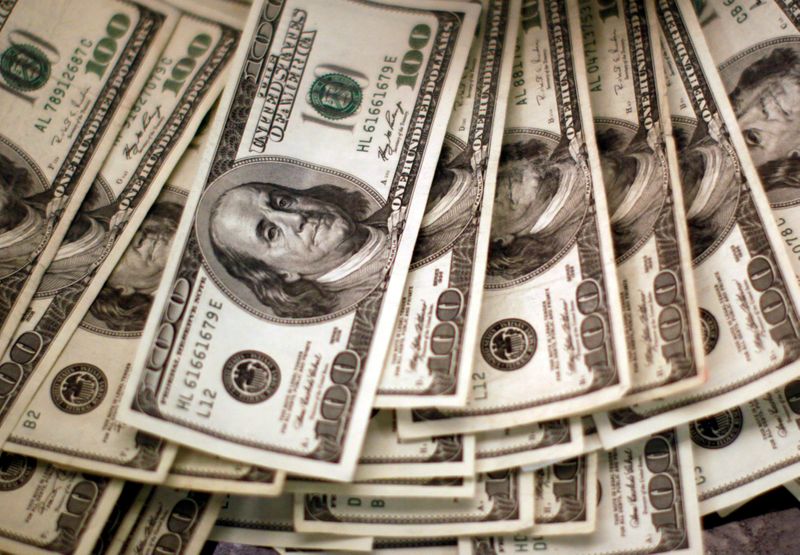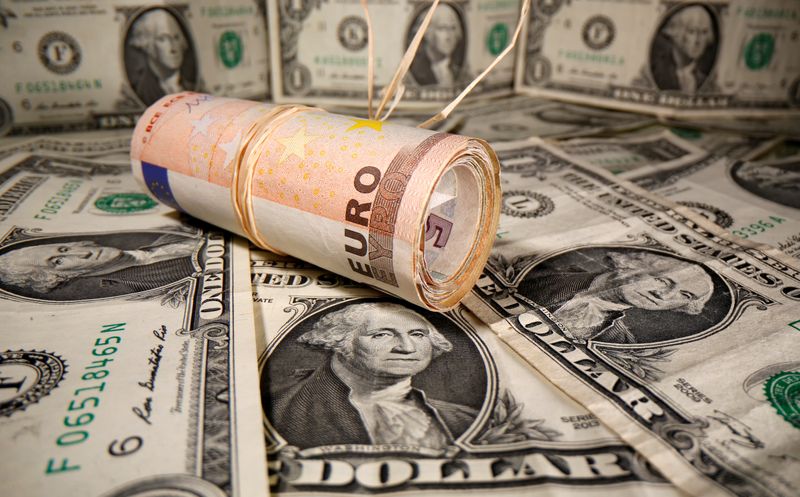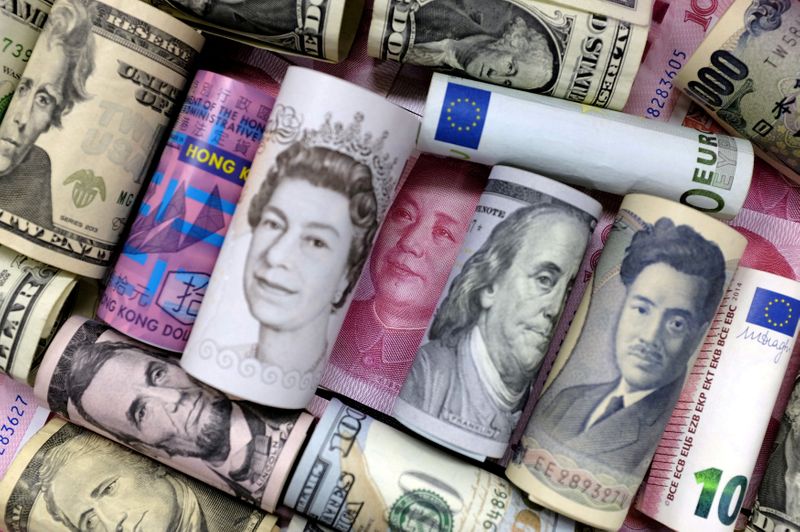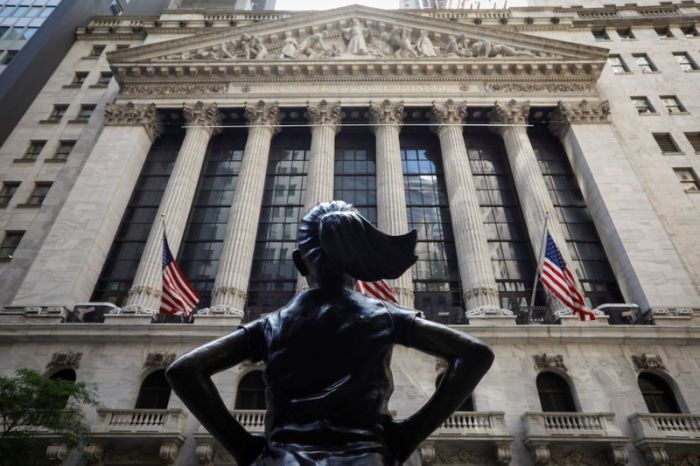NEW YORK (Reuters) – The safe-haven dollar climbed to a four-week peak on Tuesday, led by gains versus sterling on renewed worries about Brexit and as risk appetite waned with a sell-off on Wall Street.
Analysts said the U.S. currency’s gains are likely to be unsustainable.
Sterling fell to a four-week low against the dollar and was last down more 1.2% at $1.2987 <GBP=D3>.
Britain had gone into Tuesday’s fresh round of Brexit trade talks warning it was ramping up no-deal preparations. A sense of crisis took hold as the Financial Times reported the head of Britain’s legal department had quit over suggestions Boris Johnson wanted to override parts of the existing divorce deal.
For a graphic on Sterling volatility:
https://fingfx.thomsonreuters.com/gfx/mkt/dgkpllzzxpb/gbpvol.PNG
“Renewed uncertainty around the seemingly never-ending Brexit process has sent sterling tumbling this week, and probably weighed a bit on European currencies more generally, given that a disorderly end to the UK’s transition period would be disruptive for the rest of Europe too,” said Jonas Goltermann, senior economist at Capital Economics.
Aside from Brexit concerns, currency investors flocked to the dollar as U.S. stocks got hammered [.N]
“There is also some risk-off moves in the stock market, which is a mild positive for the dollar,” said Erik Bregar, head of FX strategy at Exchange Bank of Canada in Toronto.
In afternoon trading, the dollar index rose 0.4% to 93.445, after advancing to a four-week high of 93.483.
For a graphic on Currencies in 2020:
https://fingfx.thomsonreuters.com/gfx/mkt/azgvoneyypd/Pasted%20image%201599552487101.png
Capital Economics’ Goltermann said the dollar’s gains may be temporary, as he expects the global economy to continue to recover from the coronavirus shock. That should help stocks and riskier currencies gain further traction, he added.
The dollar struggled against the Japanese yen, falling 0.3% to 106.04 <JPY=EBS>, weighed down by the meltdown in U.S. stocks.
The yen rose despite data showing Japan’s economy shrank an annualized 28.1% in April-June, worse than the initial estimate of a 27.8% contraction, revised data from the Cabinet Office showed on Tuesday.
The euro fell to a two-week low versus the dollar, and was last down 0.3% at $1.1779 <EUR=EBS> ahead of the European Central Bank’s post-summer meeting later in the week.
Most analysts expect no change in the central bank’s policy but are looking to its message on inflation. Markets also want to know if the bank is concerned about the euro’s strength following its recent rise to $1.20.
Euro zone data showed its economy shriveled slightly less than initially estimated in the second quarter, but the drop was still the sharpest ever as consumer spending slumped due to COVID-19 restrictions. That had a minor impact on the euro though.
The Chinese yuan dipped against the dollar in the offshore market, after U.S. President Donald Trump warned about “decoupling” the U.S. and Chinese economies. The dollar was last up 0.2% at 6.848 yuan.
In emerging markets, Turkey’s lira hit another record low and Russia’s rouble sagged to its lowest since April amid ongoing talk about fresh Western sanctions.
For a graphic on Currencies in 2020:
https://fingfx.thomsonreuters.com/gfx/mkt/azgvoneeypd/Pasted%20image%201599560453675.png
(Reporting by Gertrude Chavez-Dreyfuss; Editing by Nick Zieminski and Richard Chang)





















